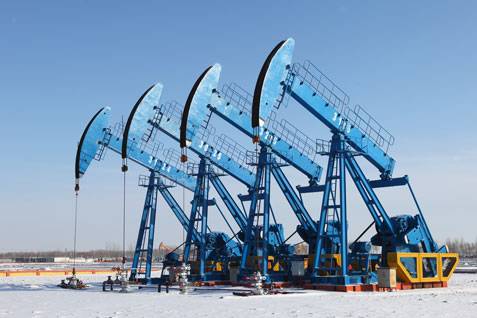Oil prices rose slightly on Thursday, supported by easing concerns over a potential global supply glut, as the impact of sanctions on Russian energy companies began to emerge.
After ending the previous session at a two-week low, Brent crude futures climbed 35 cents, or 0.6%, to $63.87 a barrel by 11:20 GMT, while U.S. West Texas Intermediate (WTI) crude gained 39 cents, or 0.7%, to $59.99 a barrel.
Analysts said the latest sanctions imposed two weeks ago on Russia’s largest oil firms have sparked some worries about possible supply disruptions, despite ongoing increases in production from OPEC and its allies.
Reuters reported this week that Russian oil giant Lukoil is facing challenges in its overseas operations due to these restrictions.
Jorge Montepeque of Onyx Capital Group said: “There’s a mild effect on prices from the sanctions, but it’s not substantial yet. The numbers suggest it should be stronger, but the market still needs to be convinced that a real impact will materialize.”
October decline and production freeze ease oversupply fears
Global oil prices fell for a third consecutive month in October amid persistent concerns of an oversupplied market, as OPEC and its partners continued to increase output alongside steady production growth from non-OPEC producers.
According to Haitong Securities, OPEC+’s broader plan to halt additional production hikes during the first quarter of next year helped calm fears of a surplus.
Weak global demand remains the central concern
Nevertheless, weak global demand for crude remains a key issue.
J.P. Morgan estimates that global oil demand rose by 850,000 barrels per day between the start of the year and November 4 — slightly below earlier expectations of 900,000 barrels per day.
“The high-frequency indicators show that U.S. oil consumption remains soft,” the bank said, citing reduced travel activity and weaker container shipping volumes.
In the previous session, prices declined after data from the U.S. Energy Information Administration revealed that crude inventories rose by 5.2 million barrels to 421.2 million barrels last week.
Further downside pressure expected
Capital Economics noted in a research report: “We expect downward pressure on oil prices to persist, supporting our conservative forecast of $60 a barrel by the end of 2025 and $50 a barrel by the end of 2026.”
Saudi Arabia cuts oil prices to Asia
Meanwhile, Saudi Arabia — the world’s largest crude exporter — sharply reduced its official selling prices to Asia for December, responding to a market awash with supply as OPEC+ production continues to increase.


